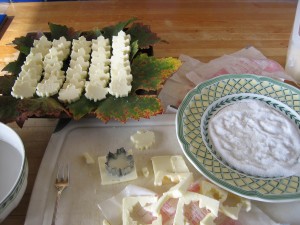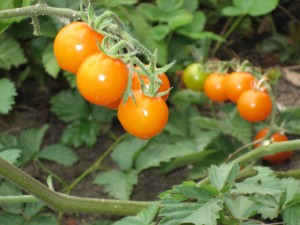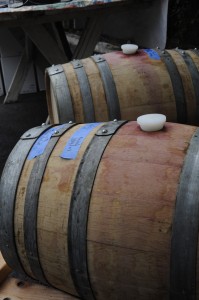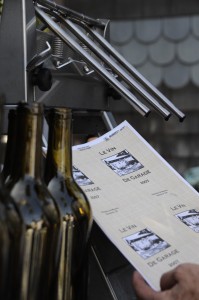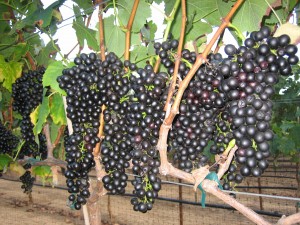 It seems just like yesterday, that my husband and I had this idea to put in a vineyard. We had about a third of an acre that was fairly flat, sunny, and western sloping toward the ocean. We overlooked this area from our home, so I wanted it to be pleasing to the eye. I had enough garden vignettes to be content. It was important to us to reap from our land, a sort of "thank you" for being able to live here and enjoy daily all that it gives us. That was nearly six years ago.
It seems just like yesterday, that my husband and I had this idea to put in a vineyard. We had about a third of an acre that was fairly flat, sunny, and western sloping toward the ocean. We overlooked this area from our home, so I wanted it to be pleasing to the eye. I had enough garden vignettes to be content. It was important to us to reap from our land, a sort of "thank you" for being able to live here and enjoy daily all that it gives us. That was nearly six years ago.
Holding that vision of a vineyard, we sought help from professionals to install one. We contacted people in Temecula and Sonoma County, to no avail. Then, on Sunday, October 9, 2005, I opened the Homescape of The San Diego Union-Tribune, in it an article called "Vine Street" highlighting successful backyard vineyards in Point Loma, Clairemont, La Jolla, and Mount Helix, including a listing of professionals locally who install vineyards. We were ecstatic!
Everything clicked from there. We sought professional advice for the best grape varietal to grow for our location, if indeed this was a good location for a vineyard, ballpark costs, and where to buy the bareroot vine plants for Spring planting. Ironically the next Spring, our local community college offered their "Vineyard Management and Production" class, www.miracosta.cc.ca.us/ for the first time. We enrolled in the class, met other fellow wine and vineyard enthusiasts, and started getting vineyard knowledge under our belt. It was a real coup when our class came, as part of the Saturday lab, and helped measure and stake out our vineyard, plant, and construct trellis for a few rows, over a three month period. It had been worth the wait!
Around the third year (or harvest) of a vineyard's life, one can make wine from the grapes. The first couple of years all of the fruit is dropped early in the year, to focus on establishing the grapevines and their roots. During this time we continued to take classes on winemaking, wines of the world, and even joined a group called San Diego County Amateur Winemaking Society, www.sdaws.org. There are a number of basic books such as From Vines to Wines by Jeff Cox, Vineyard Simple by Tom Powers, A Wine-Growers Guide by Philip M. Wagner to get you started. We felt that growing a vineyard is a hands-on experience, rather then something learned by theory, and taking practical classes was very beneficial.
We made some misstakes and had some pitfuls, such as underwatering our vines their second year, losing three vines to gophers, and not taking into consideration the competition of our young vines with mature macadamia nut trees. A vineyard is a huge time investment, and it has it's own timetable for maintaining it throughout the year.
With all that said, it is with great satisfaction as we walk our rows of Syrah vines, with their magnificent black conical-shaped clusters, soaking up their final sunny autumn days. I'm reminded of the adage, "It is not so much the destination that matters, but the journey".

